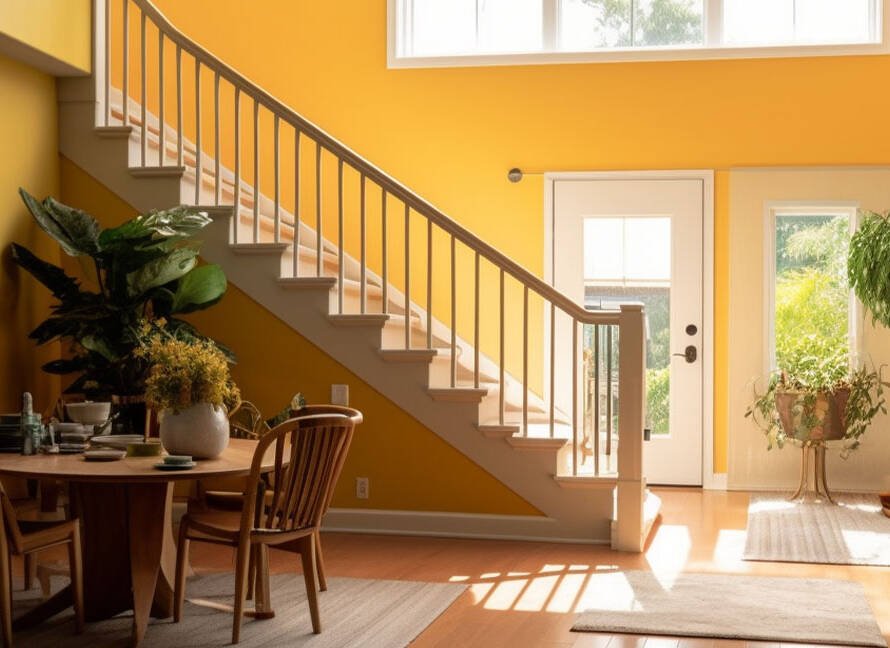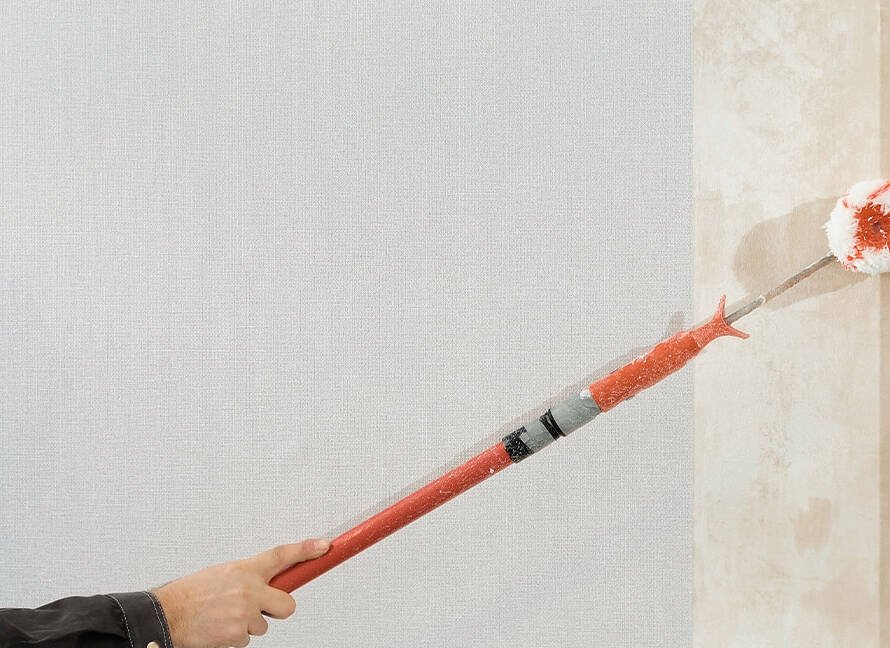Picture this: You’ve been dreaming of giving your home a fresh new look with a fresh coat of paint. You want to create a space that reflects your personality, style, and comfort. But as you start researching the costs involved, you find yourself caught between your desire for a beautiful home and the limitations of your budget. It can be disheartening, to say the least.
But worry not! We’re here to show you that achieving stunning interior painting results doesn’t have to drain your bank account. In this guide, we’ll explore tried-and-true strategies and expert tips to help you get the best value for your money, so you can transform your living spaces without compromising on quality or style.
Part 1: Understand Your Project
Assessing the Scope
Before diving headfirst into your painting project, take a step back and assess the scope of the task at hand. Which areas of your home do you want to paint? Is it just the walls or are there additional surfaces like ceilings, trim, or doors? Understanding the scale of the project will allow you to plan and budget effectively.
Identifying Materials and Factors
Now that you have a clear picture of what needs to be painted, it’s time to identify the materials and factors that can influence the overall cost. Are you planning to use high-quality paints or more budget-friendly options? Will you need additional supplies such as brushes, rollers, or painter’s tape? Considering these aspects will help you make informed decisions and avoid any surprises along the way.

Part 2: Plan and Prioritize
Creating a Detailed Plan
Just like any successful endeavor, a well-thought-out plan is key to achieving the best results within your budget. Take the time to create a detailed plan for your painting project. Outline which rooms or areas need immediate attention and prioritize accordingly. By focusing on high-impact spaces like the living room or kitchen, you can make the most significant visual impact without overspending.
Maximizing Visual Impact
Remember, you don’t have to paint every surface in a room to create a stunning effect. Think strategically about where to allocate your painting efforts. Consider creating an accent wall or highlighting specific architectural features. This way, you can achieve maximum visual impact while keeping costs in check.
Part 3: Research and Compare Prices
The Power of Research
Knowledge is key when it comes to finding budget-friendly options for your interior painting project. Take the time to research different paint brands, finishes, and supplies. Look for reputable retailers that offer competitive prices. By being well-informed, you can make smart choices that save you money without compromising on quality.
Comparing Prices and Deals
Once you have a list of desired paint brands and supplies, don’t settle for the first price you come across. Shop around and compare prices from different retailers. Look out for sales, promotions, and discounts that can significantly reduce your overall expenses. By being a savvy shopper, you can snag great deals and stretch your budget further.
Part 4: Optimize Paint Quantities
Measuring and Calculating
Buying excessive amounts of paint can quickly inflate your expenses. To avoid wastage, accurately measure the dimensions of the surfaces you’re painting. Consult paint calculators or seek expert advice to determine the required quantities. By purchasing just the right amount, you can minimize excess paint and save a considerable amount of money.
Mixing and Matching
Did you know that you can create custom colors by mixing different paint shades? Instead of buying multiple cans of paint, consider mixing and matching to achieve your desired colors. This way, you can get creative while keeping costs down and minimizing waste.
Part 5: DIY or Professional Assistance
Assessing Your Skills and Resources
Are you a DIY enthusiast with a knack for painting? Assess your skills and resources before deciding whether to tackle the project on your own. Painting can be a rewarding DIY project, but it requires time, patience, and attention to detail. Be realistic about your abilities and consider whether you have the necessary tools and knowledge to achieve professional-looking results.
Cost-Effectiveness of Hiring Professionals
On the other hand, hiring a professional painter may be a cost-effective option, especially for larger or more complex projects. Professionals have the expertise, experience, and tools to deliver high-quality results efficiently. While it may come with an upfront cost, their efficiency and the quality of their work can save you time, stress, and even money in the long run.
Part 6: Prep and Prime
Importance of Proper Preparation
The key to achieving a flawless paint finish lies in proper preparation. Before diving into painting, take the time to prep the surfaces. Clean them thoroughly to remove dirt, dust, and grease. Repair any imperfections, such as cracks or holes, and sand them smooth. Properly prepped surfaces provide better adhesion for the paint and result in a more professional-looking finish.
The Power of Priming
Don’t overlook the importance of primer! Applying a coat of primer before painting helps to seal the surface, hide imperfections, and enhance the paint’s adherence. It can also reduce the number of paint coats needed, saving you both time and money. Invest in a good quality primer that suits your project’s specific requirements for the best results.
Part 7: Choose Colors Wisely
Strategic Color Placement
Choosing the right colors can significantly impact the overall look and feel of your space. Instead of repainting entire rooms, consider strategic color placement. Focus on painting accent walls or specific architectural elements to create a focal point. This way, you can achieve a fresh, updated look without the need for excessive paint and expenses.
Versatility of Neutral and Timeless Colors
Opting for neutral or timeless color schemes not only provides versatility but can also be budget-friendly in the long run. Neutral colors are less likely to go out of style quickly, allowing you to enjoy your newly painted space for years to come without the need for frequent repainting. They also provide a neutral backdrop for furniture and decor, giving you more flexibility to change up your style over time.
Part 8: Maintain Your Painted Surfaces
Regular Cleaning and Maintenance
To extend the life of your freshly painted walls, it’s essential to implement regular cleaning and maintenance practices. Dust and clean your painted surfaces regularly to remove dirt, grime, and stains. Avoid using harsh chemicals or abrasive materials that could damage the paint. By taking care of your painted surfaces, you can prolong their durability and avoid the need for touch-ups or repainting.
Conclusion
Achieving remarkable interior painting results within a budget is possible with careful planning, research, and smart decision-making. By understanding your project, prioritizing, researching prices, optimizing paint quantities, considering DIY or professional assistance, prepping and priming, choosing colors wisely, and maintaining your painted surfaces, you can transform your home without breaking the bank.
So, why wait? It’s time to turn your dream of a beautifully painted home into a reality!
Frequently Asked Questions
- Can I achieve professional-looking results with a limited budget? Absolutely! Achieving professional-looking results doesn’t necessarily mean breaking the bank. By following budget-friendly painting strategies, such as careful planning, prioritizing high-impact areas, and researching affordable paint brands, you can achieve impressive results without compromising quality.
- What are some budget-friendly paint brands that still offer quality? There are several budget-friendly paint brands that offer quality products. Some popular options include Behr, Sherwin-Williams’ HGTV Home, Valspar, and Benjamin Moore’s Regal Select. These brands offer a range of affordable paint options without compromising on durability and finish.
- How do I calculate the amount of paint I need for each room? To calculate the amount of paint needed, measure the dimensions of the walls (length and height) and multiply them to find the total square footage. One gallon of paint typically covers around 350-400 square feet, so divide the total square footage by the coverage rate of your chosen paint to determine the number of gallons required.
- Is it better to hire a professional painter or do it myself? The decision to hire a professional painter or do it yourself depends on your skills, time availability, and the complexity of the project. If you have the necessary skills and resources, painting yourself can be a cost-effective option. However, for larger or more intricate projects, hiring a professional painter ensures high-quality results and saves you time and potential frustration.
- What are the benefits of using primer before painting? Primer plays a crucial role in achieving a professional finish. It provides a smooth, even surface for the paint to adhere to, enhances the paint’s color accuracy, and helps hide imperfections. Primer also reduces the number of paint coats needed, saving you time and money in the long run.
- Are there any specific techniques for painting accent walls? Painting an accent wall can add a pop of color and personality to a room. To ensure a seamless transition between the accent wall and the rest of the room, choose a complementary color and use painter’s tape to create clean lines. It’s also essential to apply consistent pressure and maintain a steady hand while painting to achieve a smooth and even finish.
- How often should I clean and maintain my painted surfaces? Regular cleaning and maintenance are essential for preserving the longevity of your painted surfaces. Dusting with a soft cloth or using a gentle cleaning solution and a sponge can help remove dirt and grime. Aim to clean painted surfaces every few months or as needed, depending on the level of traffic and activity in the room.
- Can I save money by repurposing leftover paint from previous projects? Yes, repurposing leftover paint from previous projects can be a cost-effective option. Ensure that the paint is still in good condition and hasn’t expired. You can use the leftover paint for touch-ups, smaller projects, or to create accent details in other areas of your home.
- What are some creative ways to use paint to enhance the aesthetics of my space? Paint offers endless possibilities for enhancing the aesthetics of your space. You can create an accent wall, paint furniture or cabinetry, add a fresh coat to doors or trim, or even experiment with patterns or stencils. These creative touches can transform your space and give it a unique, personalized look.



